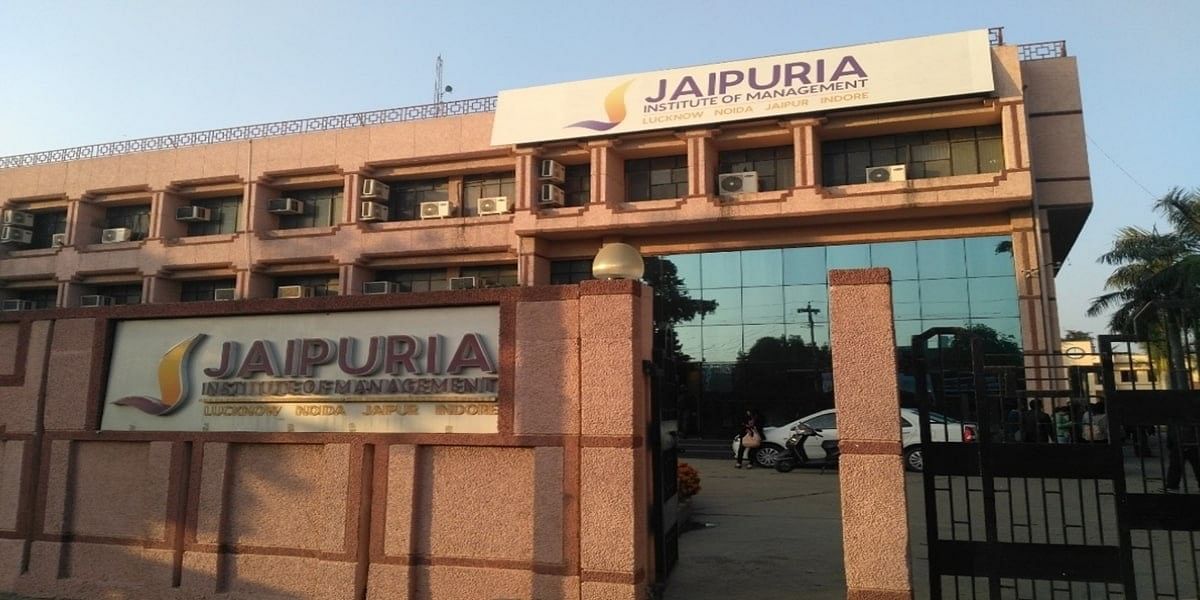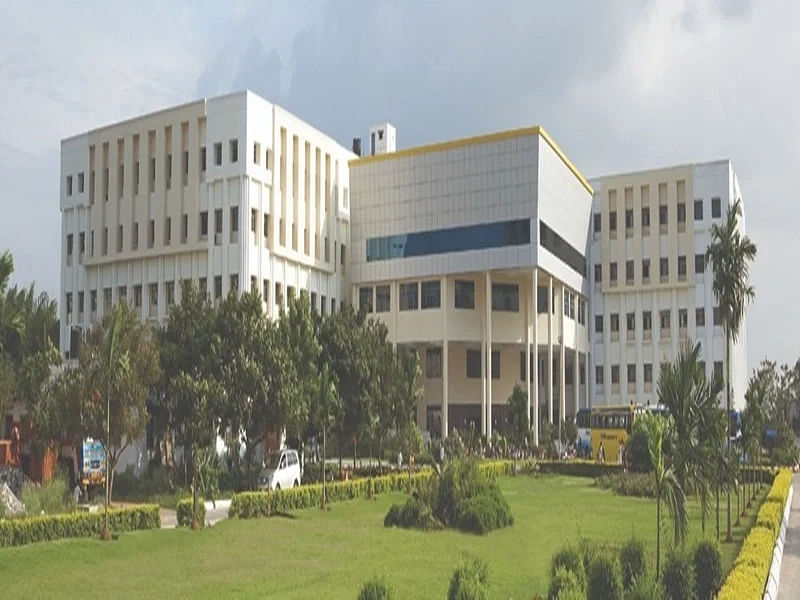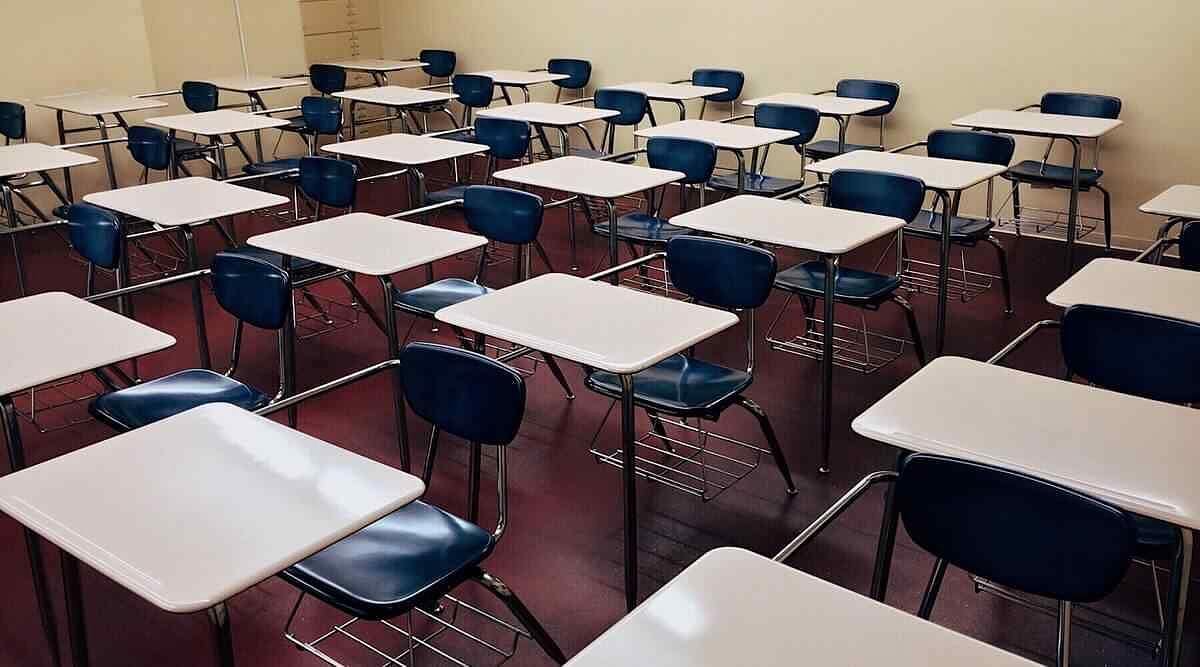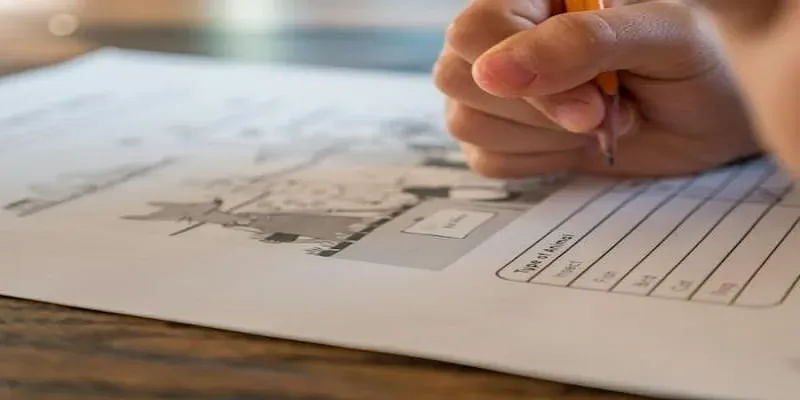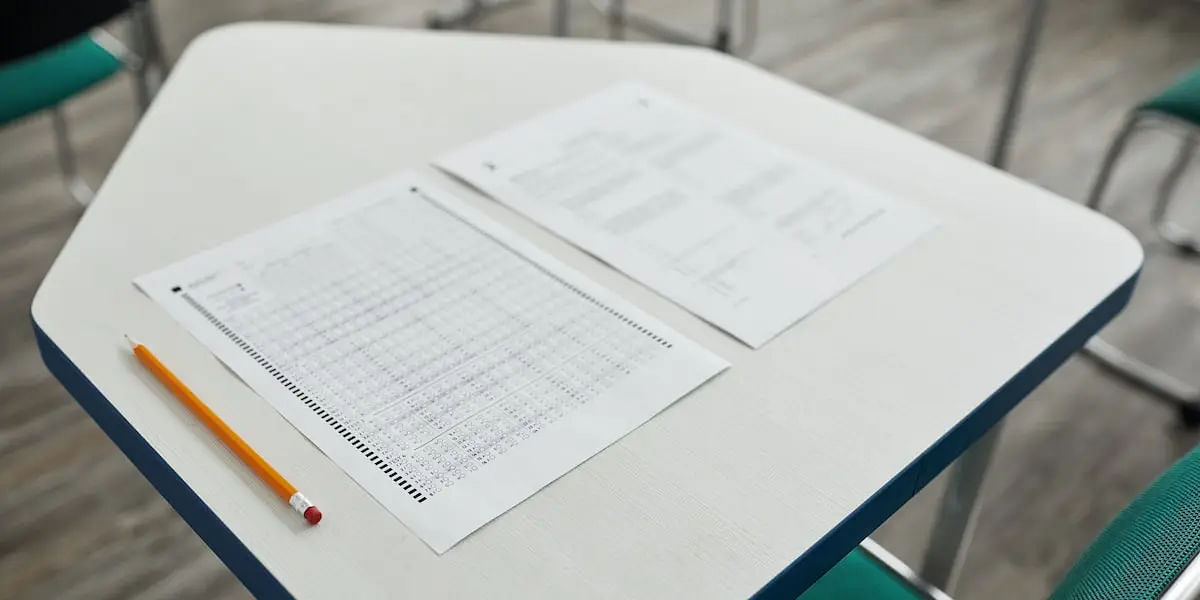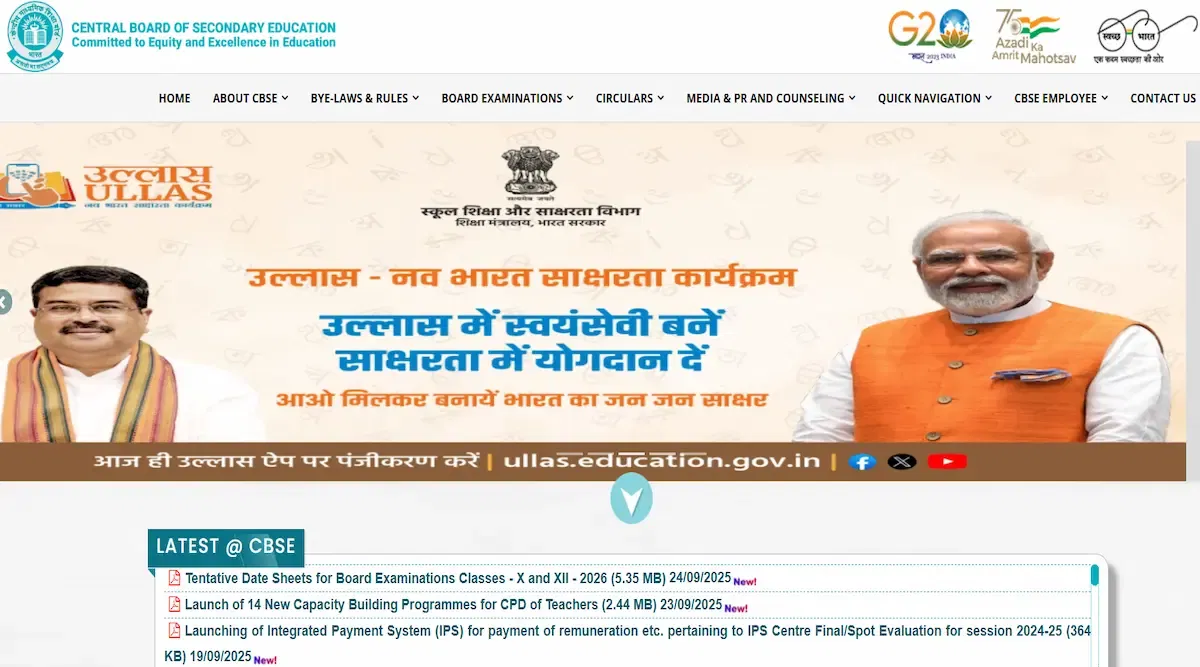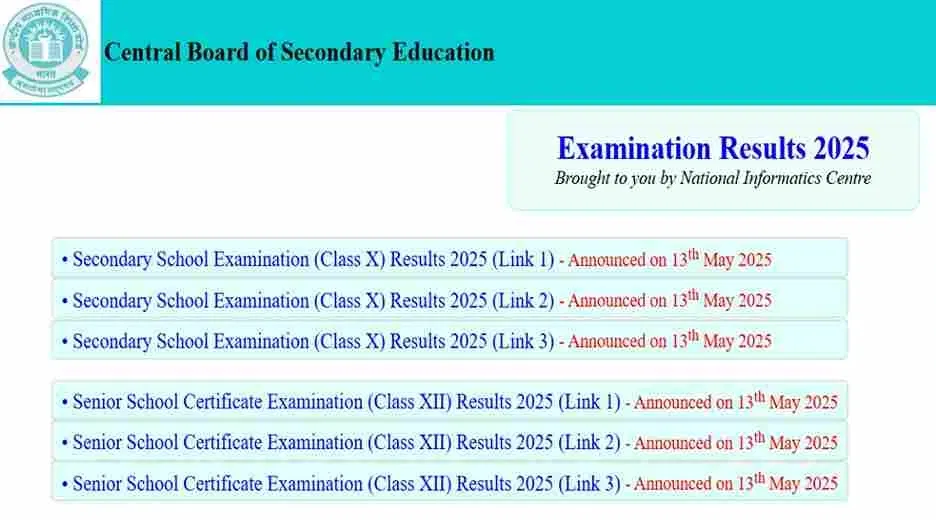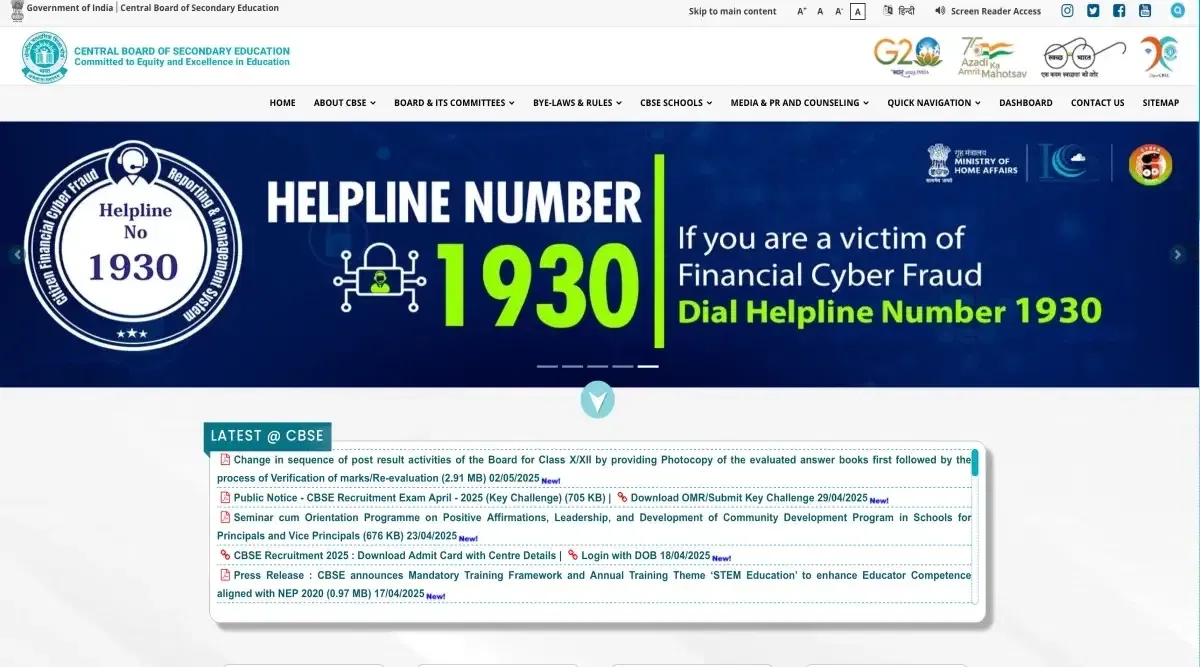CBSE Class 10 Social Science Latest Syllabus 2025-26: Download Latest and Revised CBSE Class 10th Social Science Syllabus PDF
Table of Contents
The CBSE Class 10 Social Science syllabus 2025-26 comprises a combination of chapters and topics from subjects such as History, Geography, Economics, and Political Science. The Social Science syllabus includes 16 units with important chapters such as The French Revolution, Physical Features of India, Constitutional Design, People as Resource, etc.
An in-depth review of the CBSE 10th Social Science Syllabus 2025-26 is recommended before appearing for the CBSE Class 10 Exam. The syllabus also includes guidelines and types of assessment for internal examination. The board has also published the NCERT books for Social Science, which students must refer to.
CBSE Class 10 Social Science Syllabus 2025-26
The CBSE board published the CBSE 10th Social Science syllabus 2025-26 on the official website. The syllabus includes course structure for theory exams, internal assessments, and Interdisciplinary Projects.
The syllabus provides a comprehensive framework about the topic allocation in MCQ, short answer, and long answer questions. Students can download the syllabus from the table below to check chapter-wise topics and marking allocation.
| Particulars | PDF Link |
| CBSE 10th Social Science Syllabus 2025-26 | Download Now |
CBSE 10th Social Science Syllabus 2025-26: Chapter-Wise Topics
The 10th Social Science syllabus CBSE board 2025-26 includes various chapters from India and the Contemporary World - II, Contemporary India - II, Democratic Politics - II, and Understanding Economic Development. The syllabus also includes chapter-wise map pointing items for each subject excluding Political Science and Economics.
Check the table below for a holistic understanding of the chapters and topics allotted for the theory exam (Course Content & Map Pointing) and interdisciplinary project.
| Subject | Chapters | Chapter Name |
| History (India and the Contemporary World - II) | Chapter 1 | The Rise of Nationalism in Europe |
| Chapter 2 | Nationalism In India | |
| Chapter 3 | The Making of a Global World | |
| Interdisciplinary project as part of multiple assessments | ||
| Chapter 4 | The Age of Industrialization | |
| Chapter 5 | Print Culture and the Modern World | |
| Geography (Contemporary India - II) | Chapter 1 | Resources and Development |
| Chapter 2 | Forest and Wildlife Resources | |
| Chapter 3 | Water Resources | |
| Chapter 4 | Agriculture | |
| Chapter 5 | Minerals and Energy Resources | |
| Chapter 6 | Manufacturing Industries | |
| Chapter 7 | Lifelines of the National Economy | |
| Interdisciplinary project as part of multiple assessments | ||
| Political Science (Democratic Politics - II) | Chapter 1 | Power - sharing |
| Chapter 2 | Federalism | |
| Chapter 3 | Gender, Religion, and Caste | |
| Chapter 4 | Political Parties | |
| Chapter 5 | Outcomes of Democracy | |
| Economics (Understanding Economic Development) | Chapter 1 | Development |
| Chapter 2 | Sectors of the Indian Economy | |
| Chapter 3 | Money and Credit | |
| Chapter 4 | Globalization and The Indian Economy | |
| Interdisciplinary project as part of multiple assessments | ||
| Chapter 5 | Consumer Rights (Project Work) |
CBSE Class 10 Social Science Syllabus 2025-26: Map Items
The CBSE class 10th Social Science map work is only applicable to subjects such as History and Geography. Students can check the detailed map syllabus in the table mentioned below.
| Subject | Chapter | List of areas to be pointed on the Map |
| History | Nationalism in India | I. Congress sessions: |
| 1920 Calcutta | ||
| 1920 Nagpur | ||
| 1927 Madras session | ||
| II. 3 Satyagraha movements: | ||
| Kheda | ||
| Champaran | ||
| Ahmedabad mill workers | ||
| III. Jallianwala Bagh | ||
| IV. Dandi March | ||
| Geography | Water Resources | Salal |
| Bhakra Nangal | ||
| Tehri | ||
| Rana Pratap Sagar | ||
| Sardar Sarovar | ||
| Hirakud | ||
| Nagarjuna Sagar | ||
| Tungabhadra | ||
| Resources and Development | Major Soil Types | |
| Agriculture | Major areas of Rice and Wheat | |
| Largest/ Major producer states of Sugarcane, Tea, Coffee, Rubber, Cotton and Jute | ||
| Minerals and Energy Resources | a. Iron Ore mines | |
| Mayurbhanj | ||
| Durg | ||
| Bailadila | ||
| Bellary | ||
| Kudremukh | ||
| b. Coal Mines | ||
| Raniganj | ||
| Bokaro | ||
| Talcher | ||
| Neyveli | ||
| c. Oil Fields | ||
| Digboi | ||
| Naharkatia | ||
| Mumbai High | ||
| Bassien | ||
| Kalol | ||
| Ankaleshwar | ||
| d. Power Plants (Thermal & Nuclear) | ||
| Namrup | ||
| Singrauli | ||
| Ramagundam | ||
| Narora | ||
| Kakrapara | ||
| Tarapur | ||
| Kalpakkam | ||
| Lifelines of the National Economy | a. Major sea ports | |
| Kandla | ||
| Mumbai | ||
| Marmagao | ||
| New Mangalore | ||
| Kochi | ||
| Tuticorin | ||
| Chennai | ||
| Vishakhapatnam | ||
| Paradip | ||
| Haldia | ||
| b. International Airports: | ||
| Amritsar | ||
| Delhi | ||
| Mumbai | ||
| Chennai | ||
| Kolkata | ||
| Hyderabad | ||
| Manufacturing Industries | Cotton Textile Industries: | |
| Mumbai, Indore, Surat, Kanpur, Coimbatore | ||
| Iron and Steel Plants: | ||
| Durgapur, Bokaro, Jamshedpur, Bhilai, Vijayanagar, Salem | ||
| Software Technology Parks: | ||
| Noida, Gandhinagar, Mumbai, Pune, Hyderabad, Bengaluru, Chennai, Thiruvananthapuram |
CBSE 10th Social Science Syllabus 2025-26: Project Work
The table below contains subject-wise chapters that include Interdisciplinary project work as part of internal assessments. The project work is only included for subjects such as History, Geography, and Economics.
| Subjects | Chapter Name |
| History | Chapter III - Making of a Global World |
| Geography | Chapter 7 - Lifelines of the National Economy |
| Economics | Chapter 4 - Globalization and the Indian Economy |
CBSE Class 10 Social Science Syllabus 2025-26: Deleted Portions
The board decided to remove some portions from the syllabus and the published revised one on the official website. The table below contains the deleted portions from the syllabus.
| Subjects | Chapter No. and Chapter Name | Deleted Portion |
| History (India and the Contemporary World - II) | Section 2: Livelihoods, Economies, and Societies | The chosen Chapter is to be assessed in the Periodic Tests and not in Board Examination. |
| Chapter 3: The Making of a Global | ||
| World Chapter 4: The Age of Industrialisation | ||
| Section 3: Everyday Life, Culture, and Politics | Complete Chapter | |
| Chapter 5: Print Culture and the Modern World | ||
| Geography (Contemporary India - II) | Chapter 2: Forest and Wildlife | Complete Chapter |
| Chapter 3: Water Resources | Complete the Chapter except for Map Items which will be assessed in the Examination | |
| Chapter 5: Mineral and Energy Resources | Complete the Chapter except for Map Items which will be assessed in the Examination | |
| Political Science (Democratic Politics - II) | Chapter 3: Democracy and Diversity | Complete Chapter |
| Chapter 4: Gender, Religion, and Caste | Complete Chapter | |
| Chapter 5: Popular Struggles and Movements | Complete Chapter | |
| Chapter 8: Challenges to Democracy | Complete Chapter |
Read More: CBSE Class 10 Deleted Syllabus 2025-26
CBSE 10th Social Science Syllabus 2025-26: Marking Scheme
The 10th Social Science syllabus CBSE board provides extensive insight into marking assignments for all chapters under each subject in Social Science. Students can check the CBSE previous years’ question papers to gain clarity on the overall marking process.
The subjects such as History, Geography, Economics, and Political Science under Social Science carry 20 marks each, making a total of 80 marks for the theory exam. The rest of the 20 marks are allotted for the project and internal assessment.
CBSE Class 10 2025-26 Social Science Syllabus: Subject-Wise Weightage
Each subject is allocated 25 percent marks. Refer to the table below and check the marking allocation for each subject in the theory exam.
| Subject | Marks | Percentage |
| History | 18+2 | 25% |
| Political Science | 20 | 25% |
| Economics | 17+3 | 25% |
| Political Science | 20 | 25% |
CBSE Class 10 Social Science Marking Scheme: Internal Assessment
The internal exam carries 20 marks and includes various types of assessments. Each assessment is allotted 5 marks. The image below describes the internal assessment procedure in detail.
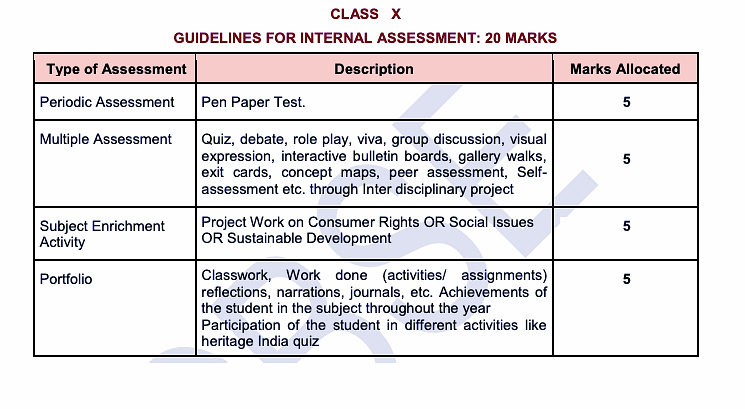
CBSE Class 10 Social Science Marking Scheme: Project Work
The project work is assigned 5 marks and falls under the ‘Subject Enrichment Activity’ under the internal assessment. The table below describes the marking scheme and different aspects on which students will be evaluated.
| Type of Aspects | Marks |
| Content accuracy, originality, and collaborative skills | 2 |
| Competencies exhibited and Presentation | 2 |
| Viva | 1 |
CBSE Class 10 Social Science Syllabus 2025-26: Question Paper Design
Students can refer to the image below and check the marking scheme for all types of questions in the board exam.
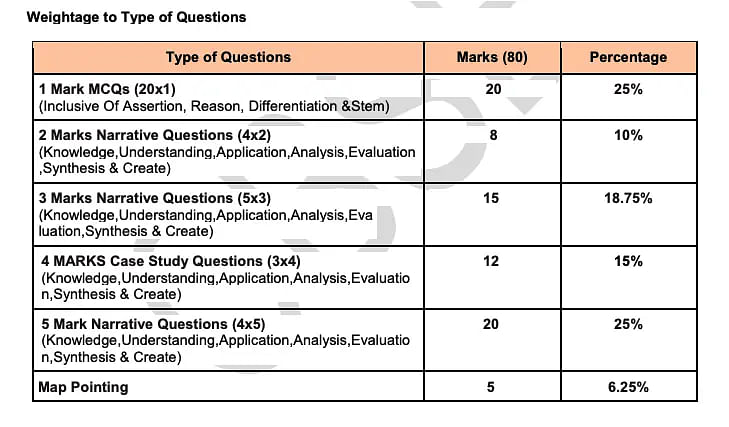
CBSE Class 10 2025-26 Social Science Syllabus: Evaluation Criteria
According to the class 10 Social Science syllabus CBSE board, the evaluation criteria depend on the student’s competency levels. The marks are assigned separately for each competency parameter.
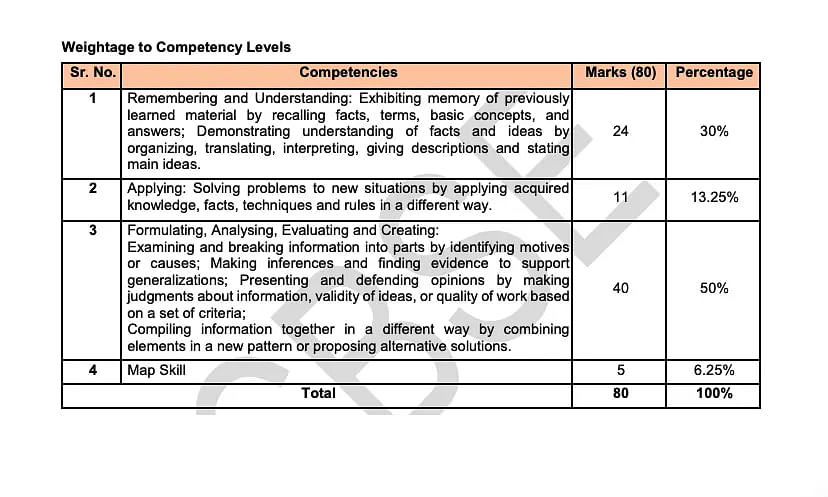
CBSE Class 10 Social Science Evaluation Criteria: Project Work
The image below shows the marking allotment for each rubric of the internal disciplinary project.
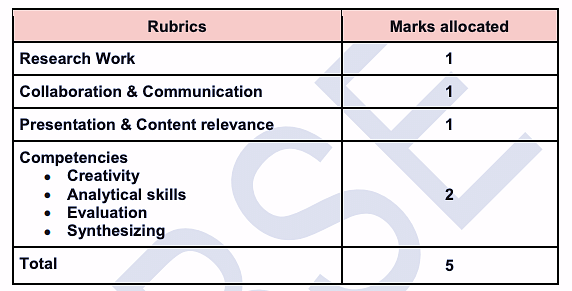
Importance of CBSE Class 10 Social Science Syllabus 2025-26
Students should download the CBSE class 10 syllabus for all subjects as it includes vital details of the course content. The syllabus can help students with the CBSE class 10 preparation. The following pointers describe the significance of referring to the class 10 Social Science syllabus CBSE board.
- The syllabus discloses the weightage allocation for all types of questions along with weightage assignment to competency levels.
- Students can know the chapter-wise list of areas to be pointed out on the map.
- The syllabus will help students get an overall idea of the CBSE class 10 exam pattern.
- Students can learn about the types of assessment and marking schemes allotted for internal assessment and interdisciplinary projects.
- The syllabus will help students with the topic allocation while reviewing CBSE class 10 sample papers.
- Students can learn about the distribution of marks over different rubrics associated with project work.
- Candidates appearing for the exam can prepare a timeline to cover the whole curriculum in advance.
Refer to the image mentioned below to check the importance of CBSE 10th Social Science syllabus 2025-26
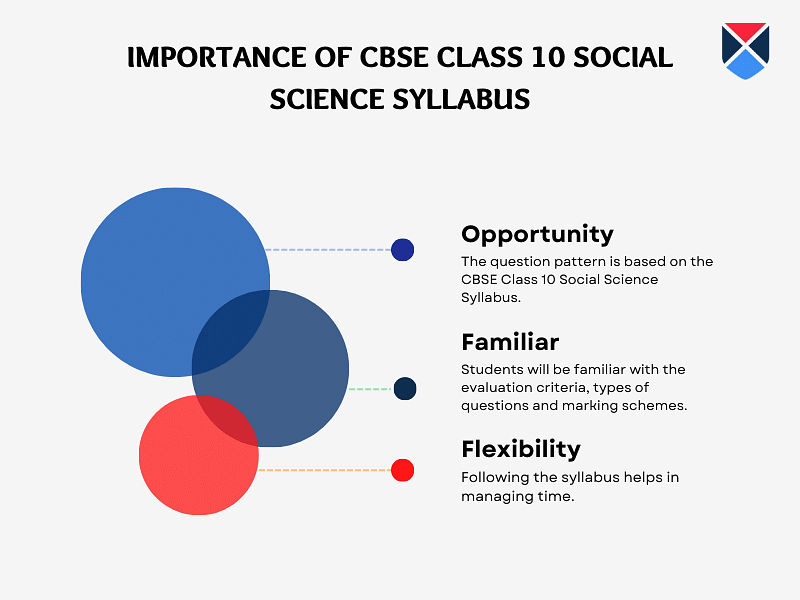




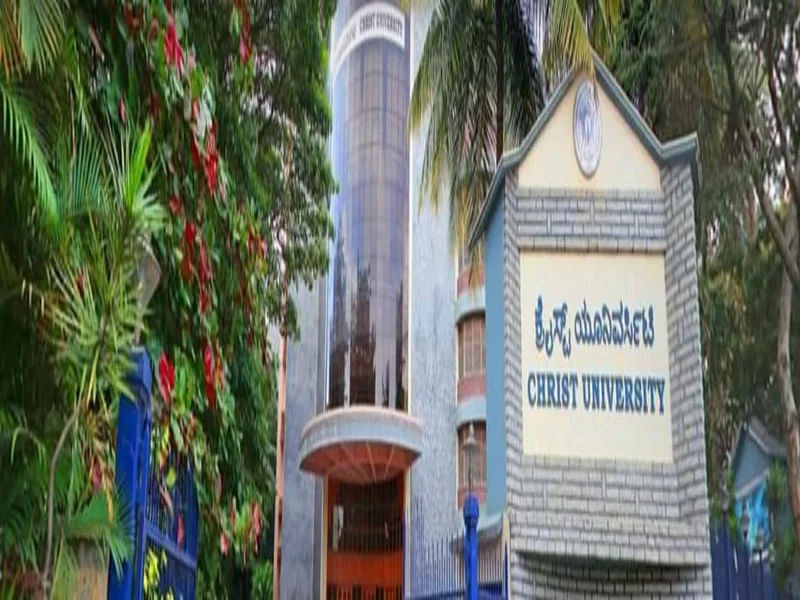

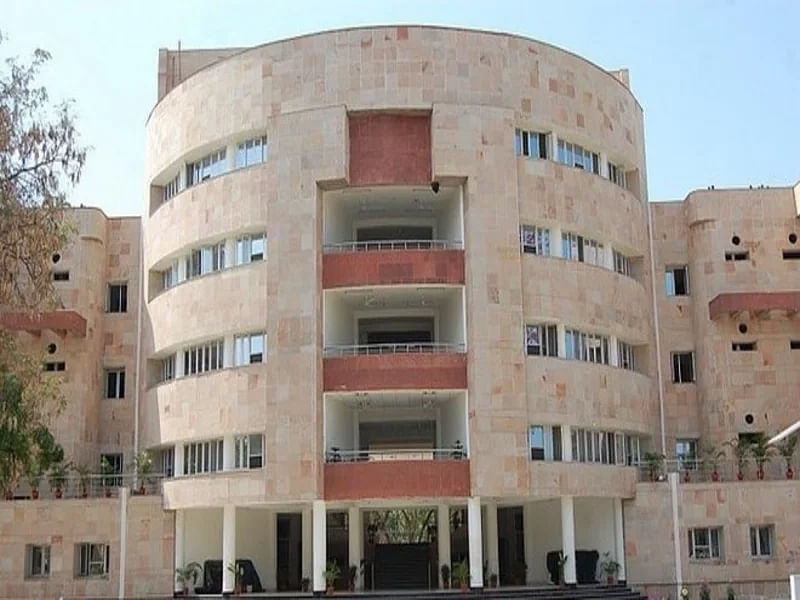
![Motilal Nehru National Institute of Technology, [MNNIT] Allahabad](https://media.getmyuni.com/azure/college-image/small/motilal-nehru-national-institute-of-technology-mnnit-allahabad.webp)
